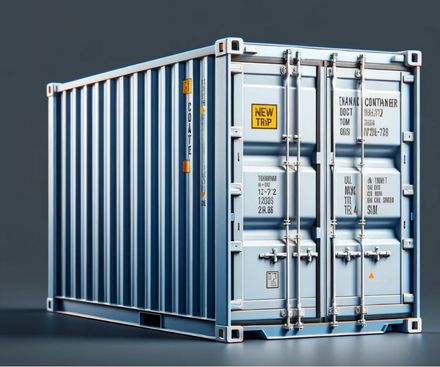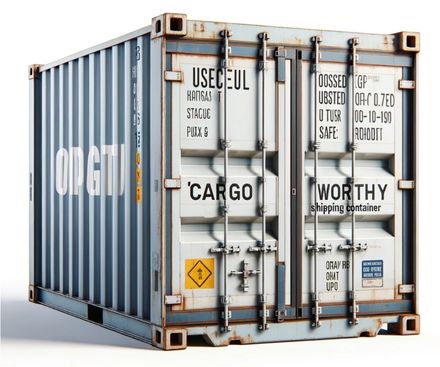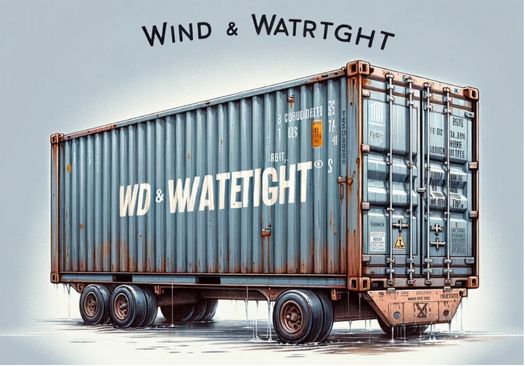Shipping containers are incredibly versatile, often used for a mix of storage, transportation, garages, and even as a living or office spaces. What you might not know is that these containers fall under various grades, each indicating their condition and quality.
As a buyer or seller, knowing about these grades is incredibly useful. It directly influences the price, how the container can be used, and whether it fits the specific needs you might have.
So, understanding these grading systems really is key. It helps you make a smart choice and ensures you pick the container that’s just perfect for your needs.
Common Grading Systems
Let’s get into the specifics. By and large, we divide shipping containers into three categories: A, B, and C. This grading scale offers an easy system to understand the condition of the container you’re buying or renting.
- Grade A: Think of this as the cream of the crop. Grade A containers are as close to brand new as you get. No glaring defects, no rust, no worrisome dents. They keep the wind and water out, ensuring that whatever you’re storing is kept safe and sound. Befitting their top-tier status, they also have a CSC plate, showing they’re good to go for international shipping.
- Grade B: These containers are slightly more ‘experienced’ than grade A. They might have a few dents here and there, and small patches of rust might be present. However, they are still functional and can act as good storage facilities or transport vessels.
- Grade C: Here we have the old-timers. Grade C containers have seen a thing or two, which shows in their substantial wear and tear. They may have quite a bit of rust or visible dents and could need some repairs to get them shipshape. However, they’re still useful for storage, especially when a little rough around the edges is no big deal.
| Grade | Age | Physical Condition | Functionality | Purpose |
|---|---|---|---|---|
| A | Fresh off the lot | Spotless, no rust or significant dents | Keeps out wind and water, CSC Plate | Great for international shipping |
| B | A few years under the belt | Minor rust and a few dents | Still in good shape, though not as perfect as Grade A | Ideal for less intensive uses |
| C | The veterans | Visible wear and tear | May require repairs, not quite as durable as Grade B | Perfect for storage, especially when appearances or minor issues aren’t a concern |
FYI: Different companies might interpret these grades a little differently due to the absence of a global standard. That’s why getting eyes on your container before purchase or rental is vital. It’s not just good advice, but it’s also the best way to make sure you’re getting what you’re paying for and that it suits your needs perfectly.
Other Container Conditions
Shopping for shipping containers, it’s essential to note that there’s more to them than the standard A, B, and C grades, dude. Besides these usual classifications, containers also come under a few other labels. These categories depend on your specific needs, so here’s the lowdown:



- New/Food Grade: If a shiny, untouched box is what you’re after, check out the New or Food Grade containers. As you’ve probably guessed, these containers haven’t spent a day at sea. They’re pristine and perfect for storing food items or sensitive things that need to stay squeaky clean.
- Cargo-Worthy: Need to ship something across our vast oceans? Cargo-Worthy containers are probably your jam. Sure, they’ve been around the block, but they’re still hardy enough for a ride on the high seas. Plus, they meet the tough safety norms for international shipping, ensuring your cargo arrives intact and ready for action.
- WWT (Wind and Watertight): Got stuff to store but not keen to send them sailing? Wind and Watertight containers have your back. They might not look super pretty, but they’re completely sealed against wind and rain, giving your stuff a cozy, weatherproof home.
- As-Is: Lastly, there are the ‘As-Is’ containers. They’ve served their time on the sea and are now up for grabs in their existing condition. They’re usually a bit beat up, with dents, rust, and maybe even a few holes, but if you’re on a budget and up for a refurbishment job, these could be a steal. Do remember, though, they might need quite a bit of work to get them back in shipshape.
At the end of the day, choosing the right container for you comes down to what you need it for and how much you’re willing to spend. Knowing these various conditions can make a world of difference, helping you make a savvy decision that ticks all your boxes.
Price Range for Different Grades
Alright, let’s talk prices. When it comes to buying shipping containers, your budget is going to depend on a bunch of things. Not just the grade of the container, but also stuff like its size, type, where it is, how much delivery will cost, and what the demand-supply merry-go-round is doing.
Your gold standard? Grade A containers. They’re the priciest of the bunch, but they’re nearly new and show barely any signs of wear and tear. If you want something that’s going to last and really give you your money’s worth, this is your best shot. But prepare to shell out quite a bit.
| Grade | Estimated Price Range (USD) |
|---|---|
| New / Grade A | 3000 – 5000 |
| Grade B | 1500 – 3000 |
| Grade C | 1000 – 1500 |
Next up, Grade B containers. These guys have seen a few more miles, have a few more stories to tell. And yeah, they’ve got a bit more wear and tear. But generally, they do their job well. They’re a solid option if you’re okay with a few more scratches and a bit cheaper price tag.
Your cheapest option is the Grade C containers. These old sea dogs have been around the block (and the world) a few times and it shows. They’re not the prettiest, but if you don’t care too much about looks and want something cost-effective, especially for storage where those dings don’t matter, they’re your go-to.
Remember, though, these are ballpark figures. Prices can change like the weather, thanks to the market or the exact state of the container you’re eyeing. So, do your homework, check out different suppliers, and get a handle on the going rates.
Oh, and one more thing – don’t forget about the delivery. These prices don’t usually include getting the container from the yard to your place. And depending on how far you are, that could add a fair bit to your bill. So, make sure you factor that in when you’re working out your budget.
Importance of Inspecting Containers
If you’re thinking of buying or renting a shipping container, having a personal checking-out session is a must-do. You need to know that while containers can have grades like A, B, or C, the quality can significantly differ. So it’s possible for a ‘B’-graded container from one vendor to match up to an ‘A’-graded container from another.
Doing a personal inspection helps you check out important stuff such as:
- Dents and deformities: The smallest dents can lead to water gathering which eventually leads to rust, which in turn undermines the lifespan and functionality of the container.
- Rust: Since shipping containers are commonly made of steel, rust is common. Surface rust might not affect the structural integrity, but persistent rust is a potential problem.
- Doors: Make sure the doors function smoothly and the latches work as they should with the door seals properly intact.
- Flooring: With most containers having wooden floors, there’s the risk of pests and rot. That’s why it’s important to make sure that the floor is up to par.
Also, the condition alone isn’t everything. You need to be thinking about where you’ll use the container. For instance, a Grade C container might not work for someone trying to make the container liveable. But for individuals interested in affordable storage options, this could be perfect.
That’s why it’s great to get a first-hand check. This way, you can grasp the costs and work that’ll go into making the shipping container serviceable. That way, you can’t run into unexpected costs.
Tip: Sometimes, you might not be able to conduct the inspection yourself. In such cases, hiring a neutral third party to inspect for you might be necessary. This small sacrifice could save you from significant financial hassles later on.
The Bottom Line
Grading helps shape your understanding of where a shipping container stands in terms of quality and potential use. It’s important for operations like storage, shipment, and creative uses. The higher-grade containers can be a bit costly, but are valuable for uses that demand structural stability. Nonetheless, even the lower-grade containers can work for storage solutions and projects that don’t have stringent demands.